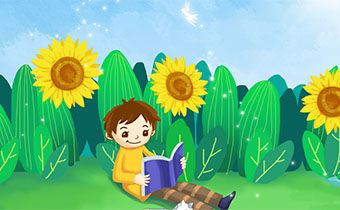高中教案教案
发表时间:2021-05-02Unit 9 When was it invented教案4。
Unit9Whenwasitinvented
一.教学内容:
Unit9Whenwasitinvented?
二.学习目标:
1.动脑筋,找规律,弄清主动语态与被动语态之间的差异,通过练习和运用加以巩固。
2.学会使用含有被动语态的不同句型结构来谈论各种发明物的历史。
3.通过熟悉我们周围经常使用的发明物的历史来开阔眼界,丰富自己的阅历,使自己养成勤于思考善于总结的好习惯。
三.教学重点难点:
一般过去时的被动语态及本模块中的一些重点短语
四.重点词和短语
1.beusedfordoing=beusedtodosth.用来做某事
2.hand-heldcalculators手提计算器
3.battery-operatedslippers用电池操作的拖鞋
4.inthedark在黑暗中
5.shoeswithadjustableheels可调整后跟的鞋
shoeswithhighheels高跟鞋
6.changethestyleofshoes改变鞋子的式样
7.fromcasualtodressy从休闲到正式
8.dosth.bymistake错误的/巧合的做某事
9.inabadmood心情糟糕
10.intheend最后,终于
attheend在……的结尾,在……尽头
bytheend在……结束时,到……末为止
Atfirsthewasstronglyagainstourplan,buttheendhegavein.
A.atB.inC.byD.to
11.byaccident偶然,意外
12.not…until直到……才
13.accordingto
thefollowingpictures,pleasewriteacomposition.
A.ThankstoB.BecauseofC.AccordingtoD.Insteadof
14.anancientChineselegend一个古老的中国传说
ancientculture古文化
15.fallinto落入
16.sometime一段时间
sometime某时
sometimes有时
sometimes几次
Myunclewillcomenextmonthandhewillstayherefor.
A.sometime;sometimeB.sometime;sometime
C.sometimes;sometimeD.sometime;sometimes
17.inthisway这样
18.travelaroundChina游览中国
19.much-lovedandactivesport深受人们喜爱而且很活跃的运动
20.adoctorcalled/named…一个叫……的医生
21.knockintosb撞上某人
knockatthedoor敲门
22.falldown跌倒
23.dividesthinto把……分成
24.theaimofsth……的目标
25.move/runtowards朝……方向移动/跑
26.It’sbelievedthat人们相信
It’sheardthat人们听说
It’ssaidthat据说
It’sthoughtthat人们认为
27.thefirstbasketballgameinhistory历史上第一场篮球赛
28.sincethen从那以后
29.thepopularityof……的流行
30.riseworldwide引起全世界广泛传播
31.thenumberof……的数量
anumberof许多
⑴thestudentsintheirschoolovertwothousand.
A.Thenumberof;isB.Thenumberof;are
C.Anumberof;isD.Anumberof;are
⑵Everyyear,watersportsattractlargenumbersoftouriststoHaikou.(词语替换)
A.alotB.muchC.manyD.more
32.dreamabout/ofdoingsth梦想做某事
五.重点、难点、考点及疑点注释
1.They’reusedforseeinginthedark.它们被用于在黑夜里观看。(SectionA,2b)
beusedfor表示“被用来做……”,介词for表示目的和用途,后面接名词或动词-ing形式。相当于beusedtodosth.。如:
Woodcanbeusedformakingpaper.木材可以被用来造纸。
知识拓展
含有beused的常用短语:
◎beusedas表示“被用作……”,介词as意思是“作为”的意思,其后一般接名词,强调使用的工具及手段。
Thisbookcanbeusedasatextbook.这本书可以当作教科书来用。
Thispieceofwoodisusedasabench.把这块木头用作凳子。
◎beusedby表示“被……使用”,by后接动作的执行者。
Thiskindofmachineisusedbyfarmersforgettingincrops.
农民们用这种机器来收割庄稼。
⑴Thestonestheycarriedwereusedhousesandbridges.
A.tobuildB.forbuildingC.tobebuiltD.AandB
⑵Theroomasameetingroom.
A.usedtobeingusedB.wasusedtobeused
C.wasusedtobeingusedD.usedtobeused
2.Ithinkthemosthelpfulinventionisthelightbulb.我认为最有用的发明是灯泡。(SectionA,3b)
helpful是由名词help加上-ful后缀构成的形容词,意为“有帮助的”,类似的形容词还有:
thank—thankful(感谢的,感激的)grate—grateful(感谢的,感激的)
use—useful(有用的)wonder—wonderful(令人惊奇的)
forget—forgetful(健忘的)success—successful(成功的)
beauty—beautiful(美丽的)pain—painful(疼痛的)
3.Potatochipswereinventedbymistake.薯条的发明纯属歪打正着。(SectionB,2a)
⑴potatochips是一个复合名词,其中第一个名词用作定语修饰后一个名词,这样的例子有很多,又如:alarmclock,telephonenumber等。
知识拓展
复合名词变复数的规则:
◎通常只把主体名词变为复数
schoolboy—schoolboys(男生)appletree—appletrees(苹果树)
vegetablesandwich—vegetablesandwiches(蔬菜三明治)
girlfriend—girlfriends(女朋友)
◎由man,woman和另外一个名词构成的复合名词,两个部分都要用复数。
manteacher—menteachers(男教师)
womandoctor—womendoctors(女医生)
⑵bymistake表示“错误地(因粗心、遗忘等所致)”。
Sorry,Itookyourbagbymistake.对不起,我错拿了你的手提包。
by和mistake中间可以加相应的形容词性物主代词。
Itookyourpenby(my)mistake.我错拿了你的钢笔。
4.GeorgeCrumcookedthemforalongtimeuntiltheywerecrispy.GeorgeCrum将它们煮了很长时间,直到它们变脆了。(SectionB,2b)
Althoughteawasn’tbroughttotheWesternworlduntil1610,thisbeveragewasdiscoveredoverthreethousandyearsbeforethat.尽管茶直到1610年才被带到西方国家,但这种饮料早在传入西方之前的三千年就被发现了。(SectionB,3a)
until意为“直到……”,引导一个时间状语。作介词时,引导一个短语;作连词时,引导一个时间状语从句。
◎until用于肯定句中,主句中的谓语动词必须是延续性、持续性动词,表示“直到……为止”。如:
Iworkeduntillateintheafternoon.我一直干到下午很晚的时候。
I’llwaitforyouuntilyoucome.我要等到你来为止。
◎until用于否定句中,表示“直到……才……”,常与瞬间动词、短暂性动词连用,强调主句所表示的动作从until所表示的时间发生,主句必须是否定句。表示瞬间的动词有come,go,leave,meet,reach,get,arrive,realize,stop等。如:
Hedidn’tgohomeuntilteno’clock.他直到10点钟才回家。
(gohome的动作是在10点钟才发生的。)
Theraindidn’tstopuntilmidnight.雨直到半夜才停。
Iwon’tleaveuntilyoupromisetohelpme.你不答应帮助我,我不会离开。
Iwon’tbelievethatlittleBobcanrun100metresin15secondsIseeitwithmyowneyes.
A.untilB.afterC.whenD.if
◎discover作动词,意为“发现”,即发现的对象是本来存在的,只是以前不知道而已,也可指发现新奇或意外之物或发现某种情况。“发现者”为discoverer。
相关链接
invent作动词,意为“发明”,发明的对象是以前没有的新东西,如工具、手段或方法。“发明”作名词用invention,“发明者”为inventor。
用discover和invent填空
⑴PaperwasinChina.
⑵ColumbusAmericain1492.
⑶Ithatshewasagoodcook.
5.Andinthisway,oneoftheworld’sfavoritedrinkswasinvented.就这样,世界上最受欢迎的一种饮料产生了。(SectionB,3a)
本句中的inthisway意为“就这样”,“以这种方式”。
Thesongwascomposedinthisway.这首歌就这样被创作出来了。
Inthisway,youwillfindtheanswertothisquestion.
用这种方法,你可以找到这个问题的答案。
知识拓展
way主要有以下几种用法:
◎表示“方法”,接不定式,...waytodosth这一结构等于...wayofdoingsth。
Scientistsaretryingtofindwaystoprevent(ofpreventing)disease.
科学家们正在寻找预防疾病的方法。
Therearemanywaysoftraveling(totravel),forexample,byair.
旅行有许多方式,例如乘飞机。
◎表示“路途”,“路线”,常构成onone’s/thewayto...“在……的途中”。在这一结构中,介词to表示方向,后接名词。如果后面接地点副词如here,there,home时则不用to。
I’monmywayhome.我正在回家的路上。
She’sonherwaytoseethefilm.她正在去看电影的路上。
◎表示“方向”。
Lookthisway.看这边。
Gothatway.往那边走。
◎表示“距离”,“路程”。
Beijingisalongwayfromhere.北京离这里很远。
6.ItisbelievedthatonDecember21st,1891,thefirstbasketballgameinhistorywasplayed.人们认为历史上的第一次篮球比赛是在1891年12月21日。(Reading)
本句中的Itisbelievedthat...为常见句型,相当于peoplebelievethat...是“人们相信/认为”的意思,其中it为形式主语,that引导的从句是真正的主语。类似的句型还有Itissaidthat…,Itissupposedthat…等。如:
Itisbelievedthatbytheyear2010,thepopulationoftheworldwillbesevenbillion.
=Peoplebelievethatbytheyear2010,thepopulationoftheworldwillbesevenbillion.人们都认为到2010年,世界人口将达到七十亿。
Itissaidthattheyhavewonthegame.据说他们赢得了那场比赛。
It’sthathe’llcomehere.
A.sayB.supposedC.believeD.expect
7.…althoughtheydidn’twintheyusedtheexperiencetohelpdevelopthegameathome.尽管他们没有赢得比赛,他们却用自己获得的经验来帮助发展了国内的运动。(Reading)
⑴although引导让步状语从句,意为“尽管,虽然”。but也有“尽管,但是”的意思,但不可与although同时出现在同一句话中,且but用作并列连词。试比较:
Althoughitrained,theboysstillplayedoutside.
=Itrained,buttheboysstillplayedoutside.尽管天下雨了,但是那些男孩子们仍在外面玩耍。
⑵athome在此意为“在本国,在国内”,多用于报刊新闻中。如:
Thecompanyisnotaspopularathomeasitisabroad.那家公司在国内不如在国外受欢迎。
Hestickstohisdreamofbecomingafamousfootballplayer,hecan’tgetsupportfromhisparents.
A.butB.althoughC.andD.so
六.语法:
被动语态“模仿秀”
ThomasEdisoninventedthelightbulb.
→ThelightbulbwasinventedbyThomasEdison.
Wewillfinishthetasktomorrow.
→.
主动语态变被动语态:将主动语态变为被动语态时,谓语结构为:be+过去分词,其中be的时态和主动语态的时态一致。
Myfathergavemeafootballonmy13thbirthday.
→Iwasgivenafootball(bymyfather)onmy13thbirthday.
→Afootballwasgiventome(bymyfather)onmy13thbirthday.
Lucyshowsussomephotosofherfamily.
→.
→.
含有双宾语的动词的被动语态:一般把代表人的宾语(间接宾语)变为被动句的主语,而把直接宾语留作被动句的宾语。如果把主动句的直接宾语变为被动句的主语,则间接宾语前需有介词(一般是to或for)。常接to的动词有:give,lend,show,pass等;常接for的动词有:borrow,make,buy等。
Wefindphysicsveryhard.
→Physicsisfoundveryhard.
IsawMrWangwalkintothebankjustnow.
→.
带有复合宾语的动词的被动语态:主动句中如果有复合宾语(即宾语和宾语补足语),变为被动语态时,将句子的宾语(即复合宾语中的逻辑主语)变为被动句的主语(宾语补足语也转化成了主语补足语)。在主动语态中,make,let,have,see,watch,hear,feel,notice等使役动词或感官动词后常接不带to的动词不定式作宾语补足语,但在被动语态中需加上to。
Thenursetakesgoodcareofmydaughterinthehospital.
→Mydaughteristakengoodtakeofinthehospital(bythenurse).
Youshouldpaymoreattentiontoyourspelling.
→.
短语动词的被动语态:在变为被动语态时,不可丢掉构成短语动词的介词或副词,也不能将其拆开。
这种茶叶闻起来很清香。
→Thiskindofteasmellsverynice.
这款裙子很好卖。
→.
主动形式表示被动含义:有些动词的主动形式表示被动意义。这类动词有:wash,sell,smell,taste,sound,feel等。
被动语态中考真题大练兵
1.—WouldyoupleasetellMissLithatsheasavolunteerforthe2008OlympicGames?
—Ofcourse.Iwilltellhertomorrow.(2007山东淄博)
A.chooseB.choseC.haschosenD.ischosen
2.Wenottoplaycomputergames.(2007内蒙古乌兰察布)
A.aretoldB.havetoldC.toldD.tell
3.—Couldyoutellmewhomtheradioby?
—Sorry.Ihavenoidea.(2007福建福州)
A.inventsB.inventedC.isinventedD.wasinvented
4.—Yourhometownhaschangedalot.
—Yes.Takealookatthesetallbuildings.Theylastyear.(2007重庆课改区)
A.buildB.builtC.wasbuiltD.werebuilt
5.—DidyougotoKangKang’sbirthday?
—No,I.(2007福建宁德)
A.wasn’tinvitedB.didn’tinviteC.amnotinvited
6.AnEnglishspeechtothechildrentomorrow.(2007广东茂名)
A.isgivenB.hasbeengivenC.willbegiven
7.根据汉语意思完成英语句子:
丢失的部件在船拖出水后被找到了。(2007山东济南)
Thelostpartsaftertheshipwasofthewater.
8.Sheusedtheknifetocutthefruitamomentago.(改为被动语态)(2007重庆非课改区)
Theknifetocutthefruitbyheramomentago.
9.Isentalettertoyoulastmonth.(改为被动语态)(2007甘肃兰州)
Alettertoyoulastmonth.
10.用括号内动词的适当形式填空:
Thedog(train)tounderstanddifferentinstructionsfortwoyears.(2007山东烟台)
答案:1~6DADDAC
7.werefound;pulledout8.wasused9.wassent10.hasbeentrained
中考聚焦
考点1.bymistake
—Sorry,Jane.Itookyourschoolbagby.
—Itdoesn’tmatter.(2006江苏盐城)
A.handB.mistakeC.bikeD.heart
bymistake意为“错误地”,在句中作状语。选B。
考点2.intheend
(词语替换)Intheend,hedecidedtosendthesickchildtohospital.(2007四川成都)
A.AtonceB.AtlastC.Atfirst
intheend意为“最后,终于”,相当于atlast/finally。选B。
考点3.pleasant
根据句意,用所给词的适当形式填空:
①Itisrainytoday,buttomorrowwe’llhave(please)weather.(2007山东烟台)
②Mostpeoplelikeeasyjobsanddon’tliketodothe(pleasant)work.(2007湖北随州)
pleasant形容词,意为“舒适的;令人愉快的”,一般指天气、时间、旅行等令人感到高兴、愉快和舒服。其反义词是unpleasant。分别填写:①pleasant;②unpleasant。
考点4.Itissaidthat…
—thatChinahasthelargestnumberofmobilephoneusers.
—Ibelieveso.Itseemseveryonehasone.(2007湖北宜昌)
A.SomeonesaidB.TheytoldmeC.ItissaidD.Iwastold
所缺主句的时态要用一般现在时,和that从句的时态保持一致。句型Itissaid…意为“据说……”,其中it为形式主语,真正的主语是that从句。选C。
相关推荐
Unit 9 When was it invented?学案
Unit9Whenwasitinvented?学案
SectionA
教师寄语:It’snevertoolatetomend.亡羊补牢,犹为未晚。
学习目标:
学习一般过去时的被动语态和特殊疑问句。
教学重难点:
一般过去时态的被动语态
基本结构:助动词be(was/were)+及物动词的过去分词
Athiefwascaughtlastnight.
Theywereaskedtospeakatthemeeting.
肯定式:Itwasmade.
否定式:Itwasnotmade.
疑问式:Wasitmade?No,itwasn’tYes,itwas
学习过程:
1.情境导入:warm-up
Askthestudentstobefamiliarwiththewordsbelowaccordingtothepicturesoncomputer.
Telephone,calculator,car,personalcomputer,TV,electriclight,lightbulb,alarm,clock,microwaveoven,electricslipper.
2.自主学习:presentation
1)教学Whenwasthecarinvented?Itwasinventedin……
Choosethethreeinventionsoftheseandaskstudentstoguesswheneachonewasinvented.
Forexample,youmightchoosecar,telephone,andpersonalcomputer.
Haveseveraldifferentstudentsguessandwritethedatesontheboard.Asktheclasstorepeatthequestionsandanswers.
[T=Teacher,S=Student]
T:Whenwasthecarinvented?(Classrepeat.)
T:Good.NowJackie,whatwasyourguess?
S1:1900
T:OK.Jackie,repeatafterme.Thecarwasinventedin1900.
Repeattheprocesswithseveraldifferentinventions.
Atlast,makestudentsfindouttherealdates.
2)教学Whowerethelightbulbsinventedby?Andwhataretheyusedfor?
呈现Edisonandlightbulbs的画面。
TellthestudentsEdisoninventedlightbulbs.
Thenaskthestudentstoanswerthequestionsbelow.
T:Whowerelightbulbsinventedby?(Classrepeat)
T:Good.NowClassrepeatafterme.TheywereinventedbyEdison.
3.合作探究:
1)教学操练1a,1c,2c
学生看书本上1a的图画,根据图画,把1a,1c,2c中的语言点综合起来,叫学生相互间回答问题。并用刚刚学到的目标句型来操练。最后,抽查几对学生,让他们在全班面前,按要求进行对话。
2)教学1b,2a,2b
首先,帮助学生明确本题的要求。接着,听力练习,学生根据录音内容完成1b,2aand2b.
最后,重放一遍录音内容,学生跟读。
4、拓展创新:
ConsolidationandExtension.
完成一个任务
Asksomestudentstoreadaboutaninventionusinganencyclopediaorotherbookfromthelibrary,orbylookingupinformationontheInternet.Havethestudentswriteupashortreportanddrawasimplepictureoftheinventionorbringinaphotoofit.Askeachstudentstoshowthepictureandreadhisorherreporttotheclass.
5.梳理知识:本单元主要学习了一般过去时的被动语态,包括其结构与用法。利用几项发明创造练习这一知识,最后用一篇小报告来完成写作练习。
6.达标测试:
(一)根据时间和人物写出发明物。
1)1885____________2)1876________________3)1927____________
4)1976________________5)JulieThompson_________6)ChelseaLanmon______
(二)汉泽英
1)计算机是何时发明的?
2)谁发明了计算机?
3)计算机是用来做什么?
4)你认为什么是最有用的发明?
5)它能够给人们更多时间工作和玩。
典型例题解析:
1.--Whataniceclassroom!--It____everyday.
A.iscleaningB.hascleanedC.mustcleanD.iscleaned
解析:推测这句话的意思应该是“它每天都被打扫”,考查被动语态的结构be+动词的过去分词。因此答案应该选D。
2.IknowBeijingwell.I____therethreetimes.
A.willgoB.havebeenC.wentD.havegone
解析:推测这句话的意思“我很了解北京,我去过那三次”。表示去过应该采用的时态是现在完成时,因此可排除A和C,区别havebeen和havegone,havebeen去过;havegone去了(还没回来)。因此应该选择B。
中考连接:
1.--Lookatthesignontheright.--Oh,smoking____here.
A.doesn’tallowB.isn’tallowedC.didn’tallowD.wasn’tallowed
2.--Willyoucometothedinnerparty?--Iwon’tcomeunlessJim______.
A.can’tbeinvitedB.wasinvitedC.willbeinvitedD.isinvited
课后反思:
说一说这节课你学到了什么知识?
Unit9Whenwasitinvented?
SectionB
教师寄语:Virtuenevergrowsold.美德永不老。
学习目标:
1、熟练掌握被动语态用法。
2、学会用被动语态表达对创造和发明事物的认识和看法。
教学重难点:主动语态被动语态
1.主动结构的宾语变为被动结构的主语;
2.主动结构的谓语动词由主动语态变为被动语态;
3.主动结构的主语变为介词by的宾语,组成介词短语,放在被动结构中谓语动词之后。在动作的执行者无须说明或不必强调时,by短语可以省略。
4.主动语态、被动语态两种时态要保持一致:
Werepairedthemotor.
Themotorwasrepairedbyus.
教学过程:
1.情境导入:Warm–up:
Askthestudentstopracticespeaking.
A:Whenwas……invented?
B:Itwasinventedin……
A:Whowasitinventedby?
B:Itwasinventedby……
A:Whatisitusedfor?
B:Itisusedfor……
2.自主学习:Presentation.
1)教学helpful,annoying
Askstudentstogivesomeexamplestoshowwhateachwordmeans.Forexample.
Avacuumcleanerishelpful.Averyloudtruckisannoying.
2)教学3a
呈现alarmclock,lightbulb,microwaveover,tea,andsoon的画面。Thenaskthestudentsthefollowingquestions.
T:Isthelightbulbusefulorannoying?(Opinionsmaydiffer.)
S1:Ithinkit’suseful.
T:Whyisit?
S1:Well,itgivespeoplemoretimetoworkandplayeveryday.
Thenaskthestudentstomakealistoffivehelpfulinventionsandfiveannoyinginventionsontheirown.Givetheclassaboutfiveminutestodothis.
3.合作探究:教学操练3b
Askthestudentstoworkinpairthefollowingtalkusingthetargetlanguage.
A:Whatdoyouthinkisthemosthelpful/annoyinginvention?
B:Ithinkthemosthelpful/annoyinginventionis……
A:Whyisthat?
B:Well,itgivespeople……
4.拓展创新:ConsolidationandExtension
Imaginethatyouarealoneonatinyisland,Choosefiveinventionsyouwouldliketohaveontheislandwithyou.Tellthegroupwhatyouchoseandwhy.
5.梳理归纳:
本节课主要的内容是主动与被动语态的练习转换。
6.达标测试:
句型转换
1.Shewasseentocomeoutofthelibrarybyhim.(变被动语态)
2.Whenaretreesoftenplanted?(变被动语态)
3.TheLeaguewasfoundedinGuangzhouin1922(就画线部分提问)
4.Didthestudentsweartheschoolclothesalot?(变被动语态)
5.Katetookgodcareofthebabyyesterdayevening.(变被动语态)
6.Hisauntboughthimabicycle.(变被动语态)
7.Hisauntboughthimabicycle.(变被动语态)
典型例题解析:
1.老人们被照顾地很好。Theold____________afterwell.
解析:这个题主要考查被动语态的结构be+动词的过去分词和应用,在本题中应该是belookedafter.
2.Youcanusethebox______thetoys.
A.carryB.carryingC.tocarryD.carried
解析:在这个题目考查一个短语的应用usesthtodo利用某物做某事,因此答案为C。
中考连接:
1.AlthoughTomfailedthegame,_____hesaidhewouldtryagain.
A.B.andC.butD.because
2.Imustpractice_____English,becauseit’simportantwhiletalkingwithaforeigner.
A.speakB.tospeakC.speakingD.speaks
课后反思:
想想这节课还有哪些知识没掌握?
Unit 9 When was it invented?教案3
Unit9Whenwasitinvented?
重点、难点、考点及疑点注释
1.They’reusedforseeinginthedark.(P69)它们被用于在黑夜里观看。
beusedfor表示“被用来做……”,介词for表示目的和用途,后面接名词或动词-ing形式。
Woodcanbeusedformakingpaper.木材可以被用来造纸。
知识拓展
含有beused的常用短语:
◎beusedas表示“被用作……”,介词as意思是“作为”的意思,其后一般接名词,强调使用的工具及手段。
Thisbookcanbeusedasatextbook.这本书可以当作教科书来用。
◎beusedby表示“被……使用”,by后接动作的执行者。
Thiskindofmachineisusedbyfarmersforgettingincrops.
农民们用这种机器来收割庄稼。
2.Ithinkthemosthelpfulinventionisthelightbulb.(P70)我认为最有用的发明是灯泡。
helpful是由名词help加上-ful后缀构成的形容词,意为“有帮助的”,类似的形容词还有:
thank—thankful(感谢的,感激的)grate—grateful(感谢的,感激的)
use—useful(有用的)wonder—wonderful(令人惊奇的)
forget—forgetful(健忘的)success—successful(成功的)
beauty—beautiful(美丽的)pain—painful(疼痛的)
3.I’dliketohavearadiobecauseIcouldlistentomusicallday.(P70)我想有一个收音机,这样我就可以整天听音乐了。
本句中的情态动词could用来表示逻辑上或理论上的可能性,而不是某种实际上将要发生或正在发生的可能性。
Anybodycouldmakemistake.任何人都可能犯错误。
Theweatherherecouldbeverycoldinwinter.冬天这儿的天气很冷。
特别提示
could也表示人或动物的内在能力,有某种知识或者技能而能够做某事。
Hehurthisfootandcouldn’tplaysoccer.他的脚受了伤,所以他不能踢足球了。
4.Thepotatochipswereinventedbymistake.(P71)土豆条的发明纯属歪打正着。
(1)potatochips是一个复合名词,其中第一个名词用作定语修饰后一个名词,这样的例子有很多,又如:alarmclock,telephonenumber等。
知识拓展
复合名词变复数的规则,你一定要牢记啊!
◎通常只把主体名词变为复数
schoolboy—schoolboys(男生)appletree—appletrees(苹果树)
vegetablesandwich—vegetablesandwiches(蔬菜三明治)
girlfriend—girlfriends(女朋友)
◎如果没有主体名词,在最后一个名词上用复数。
good-for-nothing—good-for-nothings(饭桶、无用的人)
three-year-old—three-year-olds(三岁的孩子)
◎由man,woman和另外一个名词构成的复合名词,两个部分都要用复数。
manteacher—menteachers(男教师)
gentlemanfarmer—gentlemenfarmers(乡绅)
(2)bymistake表示“错误地(因粗心、遗忘等所致)”。
Sorry,Itookyourbagbymistake.对不起,我错拿了你的手提包。
短语链语
mistake...for“错把……当作……”
5.GeorgeCrumcookedthemforalongtimeuntiltheywerecrispy.(P71)GeorgeCrum将它们做了很长时间,直到它们变脆了。
until常用作介词或连词,用来引导介词短语或从句在句子中作时间状语。
◎在肯定句中,until与延续性、持续性动词连用,表示“直到……为止”。
Iworkeduntillateintheafternoon.我一直干到下午很晚的时候。
◎在否定句中,until常与瞬间动词、短暂性动词连用,表示“直到……才……”,“不到……不……”。
Theraindidn’tstopuntilmidnight.雨直到半夜才停。
Iwon’tleaveuntilyoupromisetohelpme.你不答应帮助我,我不会离开。
6.Andhesprinkledlotsofsaltonthemsotheyweresalty.(P71)然后,他在上面撒很多盐,这样它们就咸了。
(1)sprinkle是“撒、洒”的意思,常构成sprinkleAon/overB或sprinkleBwithA表示“撒(某物)于(某物的表面)”。
Shesprinkledsandalongtheicypath.她往结冰的路上撒了些沙子。
Hesprinkledvinegaronhisfishandchips.他往鱼和土豆上洒了些醋。
(2)salt是不可数名词,其形容词是salty。在英语中,很多名词后加-y可以构成形容词,表示“充满/包含……”,其意思与原来词汇的意思相同,只是词性不同,如cloud—cloudy,hair—hairy,rose—rosy,sleep—sleepy等。
7.Someleavesfromanearbybushfellintothewaterandremainedthereforsometime.(P72)附近丛林里的一些树叶掉进了水里,并留在那里很长时间。
(1)fallinto在这里是“落入、陷入”的意思。
Someashfellintomycup.一些灰掉进我的杯子里了。
Aripefruithappenedtofallintohishand.一个熟了的果子碰巧掉在他手里。
(2)fallinto有时也可以作“开始”解。
Hefellintoconversationwithme.他开始和我谈起话来。
(3)remain表示“继续、依然、停留”,后面接名词,动词不定式。
Heremainedaprisonerfortherestofhislife.他的余生都在牢中度过。
Itsoundsagoodidea,butitremainstobeseenwhetheritwillsucceed.听起来这是个好注意,可是它能否成功,要等以后才能知晓。
(4)remain后面也可以接副词或介词短语。
Sheremainsinthehouseallthesedays.她这些天一直呆在那栋房子里。
Threeoutoffourofthemremainedsingle.他们四个人中有三个人还是单身。
特别提示
remain还有“剩下、残余”的意思。
Ican’tgotothecinemabecauseIhavealotofhomeworkremainedundone.
我不能去看电影,因为我还有很多作业未做。
8.Andinthisway,oneoftheworld’sfavoritedrinkswasinvented.(P72)就这样,世界上最受欢迎的一种饮料产生了。
本句中的intheway意为“就这样”,“以这种方式”。
Thesongwascomposedinthisway.这首歌就这样被创作出来了。
Inthisway,youwillfindtheanswertothisquestion.
用这种方法,你可以找到这个问题的答案。
知识拓展
way主要有以下几种用法:
◎表示“方法”,接不定式,...waytodosth这一结构等于...wayofdoingsth。
Scientistsaretryingtofindwaystoprevent(ofpreventing)disease.
科学家们正在寻找预防疾病的方法。
Therearemanywaysoftraveling(totravel),forexample,byair.
旅行有许多方式,例如乘飞机。
◎表示“路途”,“路线”,常构成onone’s/thewayto...“在……的途中”。在这一结构中,介词to表示方向,后接名词。如果后面接地点副词如here,there,home时则不用to。
I’monmywayhome.我正在回家的路上。
She’sonherwaytoseethefilm.她正在去看电影的路上。
◎表示“方向”。
Lookthisway.看这边。
Gothatway.往那边走。
◎表示“距离”,“路程”。
Beijingisalongwayfromhere.北京离这里很远。
9.DrNaismithdividedthemeninhisclassintotwoteams,andtaughtthemhowtoplayhisnewgame.(P74)奈斯密斯医生把他的学生分成两组,并教他们如何玩他的新游戏。
本句中的divide...into是动介短语,与separate...into同义,意为“把……划分成”,其中divide是及物动词。
Myfatherdividedthecakeintofourpieces.我爸爸把蛋糕分成4块。
Wedividedourselvesintosmallgroupstocarryouttheplan.
我们分成几个小组来执行这个计划。
10.ItisbelievedthatonDecember21?st,1891,thefirstbasketballgameinhistorywasplayed.(P74)人们认为1891年12月21日是历史上的第一次篮球比赛的日子。
(1)本句中的Itisbelievedthat...相当于peoplebelievethat...是“人们相信/认为”的意思,that引导的是主语从句。
Itisbelievedthatbytheyear2010,thepopulationoftheworldwillbesevenbillion.
=Peoplebelievethatbytheyear2010,thepopulationoftheworldwillbesevenbillion.人们都认为到2010年,世界人口将达到七十亿。
(2)believe意为“相信”,“认为”,一般表示相信某人是诚实的或某事是真实的,后面可以接名词、代词、从句或复合结构作宾语。
Ijustcouldnotbelievemyeyes.我简直不敢相信我的眼睛。
Scientistsbelievethatwhalescanlivefortwentytothirtyyears.
科学家们认为鲸可以活二十到三十年。
◎believe可以用于被动语态。
Theyarebelievedtohavediscussedthisproblem.据说,这个他们已经讨论过了。
特别提示
believe与believein的含义不同。
◎believein意为“信奉、信仰”,后面常接表示真理或宗教一类的名词,也可作“信任、信赖”解。
MygrandpabelievesinBuddhism.我爷爷信奉佛教。
Ican’tbelieveinhishonesty.我不相信他诚实。
Unit 4 When was it invented ?SectionB 教案
Unit4Whenwasitinvented?SectionB
TeachingAims:●Tolearntousepassivevoice(questionsandstatements)
●Toreadabouttea
Step1Reviewthenewwordsandtheusefulphrases,andusethemtomakesomesentencesallbythemselves
1.表示“错误地________________2.“错把……当作……___________________
3.足够咸____________________4.直到……才……”,____________________
5.撒(某物)于(某物的表面)___________6.偶然,无意中___________________
1.小汽车是什么发明的?___________________________________________
2.它是在1885年发明的。__________________________________________
3.它们是由谁发明的?______________________________________________
4.它们是由JulieThompson发明的。__________________________________
5.它们是用来做什么的?____________________________________________
6.它们是用来在黑暗处看东西的。_____________________________________
Step2.1.Readthearticleandwriteanswerstothequestions.(3a)
1.Whatisthearticleabout?
2.Whenwasitinvented?
3.Whowasitinventedby?
4.Howwasitinvented?
Step3.Listentothetapethenfillinblanks,thenchecktheiranswers.
Whoinventedtea?
Didyouknowthattea,themost_______drinkintheworld(afterwater),_____________byaccident?Althoughtea_______________totheWesternworlduntil1610,thisbeverage_________overthreethousandyearsbeforethat._____________anAncientChineselegend,theemperorShenNongDiscoveredteawhenhe________drinkingwateroveranopenfire.Someleavesfromanearbybush________thewaterandremainedthereforsometime.Theemperornoticedthattheleavesinthewater______apleasantsmell.Laterhedecidedtotastethehotmixture.Itwasquitedelicious.And______,oneoftheworld’sfavorite____wasinvented.
Step4Retellthearticleaccordingtothekeywordsandtheform
1.Popular2.wasinvented3.wasn’tbrought
4.wasdiscovered5.Accordingto6.wasboiling7.fellinto
8.produced9.Drinks10.inthisway
What:Itisabouttheinventionoftea.
Who:theChineseemperorShenNong.
When:overthreethousandyearsago.
Where:
How:
Today:
Step5Explainthedifficultpoints(小组讨论并造句)
Step6Writeanarticleusingthenotesinthebox
1.workingroupsandmakesomeconversationsjustlikethis
A:whoinventedtheflyingdisk?
B:Theflyingdiskwasinventedbycollegestudents.
-----------
Who:collegestudents
What:metalpieplate,flyingdisk
When:1950
Where:bakeryBridgeport,Connecticut
Why:newtoy
How:studentseatpie,throwpieplates
Today:clubs,magazines,festival
Step7.Askthestudentstopractice3b,writeanarticleusingthenoteinthebox.
Frompieplatetoflyingdisk.
Theflyingdiskwasinventedbycollegestudents.________________________
_________________________________________________________________
————————————————————————————————
Step7.Dosomeexercises(自我检测)
一、根据所学短文完成填空。
Didyouknowthattea,themostpopulardrinkintheworld(afterwater),__________(invent)byaccident?Althoughtea__________(notbring)totheWesternworlduntil1610,thisbeverage_________(discover)overthreethousandyearsbeforethat._____________(根据,通过)anAncientChineselegend,theemperorShenNongDiscoveredteawhenhe________(boil)drinkingwateroveranopenfire.Someleavesfromanearbybush__________(落入)thewaterandremainedthereforsometime.Theemperornoticedthattheleavesinthewater_______(produce)apleasantsmell.Laterhedecided_____(taste)thehotmixture.Itwasquitedelicious.And_____(这样),oneoftheworld’sfavorite____(drink)wasinvented.
二、背过下列重点句并默写在学案上,注意书写认真
1.茶是世界上最受欢迎的饮料(仅次于水),你知道它是由于一个偶然的原因而发明出来的吗?____________________________________________________________
——————————————————————————————————?
2.虽然知道1610年茶才被带到西方国家。但这饮料早在传入西方之前的3000年前就被发现了。__________________________________________________________
______________________________________________________________________.
3.根据一份中国的古代资料记载,神农氏在户外的柴火上烧水喝时发明了茶。______________________________________________________________________
_____________________________________________________________________
4.附近的灌木丛中的树叶落入水中并在里面泡了一段时间.
______________________________________________________________________.
学后小记:



